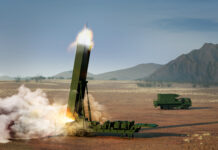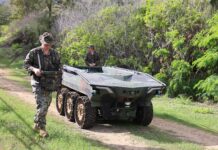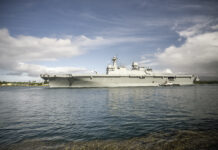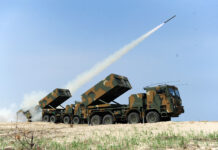Exploring a defense manufacturing base in Eastern Germany to Bundeswehr’s defense capabilities and regional growth
As Europe continues to recalibrate its defense posture amid Russia’s ongoing war in Ukraine and broader geopolitical shifts, the demand for scalable, resilient, and localized defense manufacturing has reached a critical juncture. Nowhere is this recalibration more visible than in Germany, which is navigating a historic defense modernization program under the Zeitenwende framework—grappling with capability gaps, alliance interoperability, and industrial bottlenecks.
Against this complex backdrop, Hanwha Aerospace of South Korea has emerged as one of the most assertive non-European defense companies aligning long-term industrial investments with European strategic imperatives. At its inaugural Industry Day held in Berlin on May 27, the company unveiled its ambition to establish a defense manufacturing facility in eastern Germany—marking a significant step toward embedding itself within the European defense and industrial landscape.
The event, attended by over 80 participants from federal ministries, regional governments, tier-one defense contractors, and investment facilitation agencies, served as a high-level platform for exploring cooperative pathways and industrial collaboration. It also offered a comprehensive showcase of Hanwha’s growing European footprint and its intent to act not merely as a supplier, but as a long-term partner in regional capability development.

“Hanwha is committed to strengthening strategic partnerships within Germany’s dynamic defense sector,” said Executive Vice President Mr. Peter Bae, Hanwha Aerospace Europe. “Our value proposition goes beyond equipment—we aim to drive economic and technological growth through meaningful localization.”
“Hanwha sees significant potential to localize advanced defence capabilities in close partnership with Germany’s mature industrial base,” Bae added. This aligns with our broader commitment to reinforcing NATO’s strategic autonomy through sustainable supply chains across key allied nations”
If realized, the proposed facility in eastern Germany would serve as a strategic hub for the local production of sophisticated precision-guided missiles and ammunition—capabilities aligned with the Bundeswehr’s modernization priorities and NATO interoperability standards. Hanwha also remains open to exploring collaboration in other strategic domains, including aerospace, intelligence, surveillance and reconnaissance (ISR), and maritime defence.
The project is estimated to generate thousands of direct and indirect jobs. Site selection is underway in coordination with state-level authorities and investment promotion bodies.
Bae stressed, “Hanwha is committed not only to supporting the frontline defense capabilities of NATO allies, but also to enhancing the strategic readiness of key rear-area nations such as Germany—solidifying the depth and resilience of Europe’s collective security architecture.”
Hanwha’s offering dovetails with Germany’s urgent need to diversify suppliers and localize critical industrial capabilities. But the German defense market remains among the most intricate in the world—dominated by well-entrenched national players with strong political ties and deep integration into the procurement system. Hanwha’s strategy, therefore, is not grounded in direct competition, but rather in strategic complementarity.
“By building strong industrial linkages with German partners, we aim to contribute to both Germany’s defense readiness and its economic resilience,” noted Jeff Sung, Director of Communications, Hanwha Aerospace. “We are not here to displace, but to collaborate—on Germany’s terms.”
Already, Hanwha maintains procurement relationships with over 60 German suppliers spanning the defense, shipbuilding, and high-precision manufacturing sectors—generating more than €100 million in annual sourcing. The new investment seeks to deepen these partnerships while advancing Germany’s broader goals of defense industrial sovereignty.
A Multi-Domestic Model Built on Proven Localization
Hanwha’s growing presence in Germany builds upon its extensive record of successful localization across allied and partner nations. In Poland, the firm is driving one of Europe’s most ambitious modernization programs—supplying K9 Self-Propelled Howitzers, co-producing Chunmoo Multiple Rocket Launchers (MRLS), and operating a joint venture with WB Group for indigenous missile production.
In Romania, plans are underway to establish production lines for K9s, K10 ammunition vehicles, and possibly Redback Infantry Fighting Vehicles. Hanwha also maintains active defense programs with Norway, Finland, and Estonia—encompassing artillery platforms, guided munitions, and integrated training and sustainment solutions.
In the Indo-Pacific, the company’s Armoured Vehicles Centre of Excellence in Geelong, Australia, stands as a flagship example of full-spectrum localization—encompassing design, production, and lifecycle support for armored platforms tailored to regional needs.
“The current security environment demands innovation, resilience, and trusted alliances,” said Mr. Kyounghoon Kang, Head of Germany Business, PGM Business Group, Hanwha Aerospace HQ. “With more than $8 billion in planned investments over the next couple of years in global defense markets, Hanwha is well-positioned to deliver interoperable, localized solutions that enhance both national capabilities and allied readiness.”
Hanwha Aerospace



![A Strategic Partnership in Action: Turning the Hague Defence Investment Plan into Industrial Reality Michael Coulter, President and CEO, Hanwha Global Defense [Hanwha Aerospace]](https://euro-sd.com/wp-content/uploads/2025/07/250425-한화-마이클-쿨터-사장님2799-Kopie-218x150.jpg)







